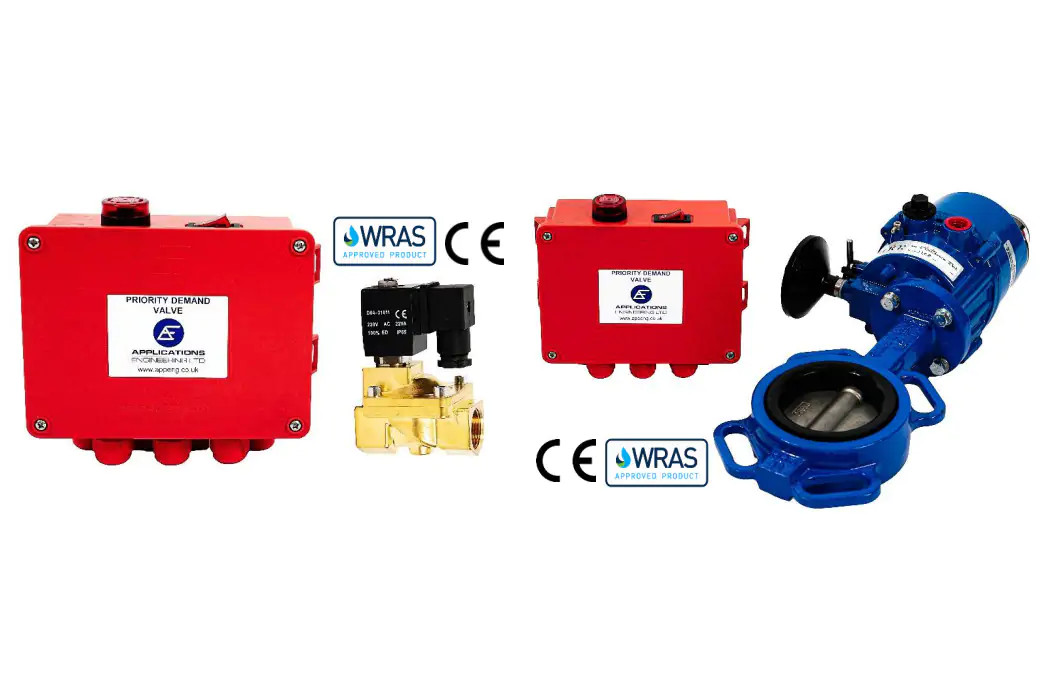
When it comes to commercial fire safety, staying ahead of the curve is paramount.
As regulations evolve and technology advances, it’s crucial to adopt fire protection products and solutions that not only meet current standards but also provide enhanced protection and efficiency. One such product that cannot and should not be overlooked is the Fire Priority Demand Valve (PDV).
These intricate devices have proven to be a game-changer in commercial fire sprinkler systems, offering a host of benefits that make them an essential component in modern fire safety setups.
Meeting and Exceeding BS 9251 Standards
Fire Priority Demand Valves have become increasingly valuable with the release of the 2021 update to BS 9251, the British Standard for sprinkler systems in residential and domestic occupancies.
These demand valves play a crucial role in helping combined fire sprinkler sets meet and exceed the stringent requirements set forth by this standard.
The introduction of building Category 4 in BS 9251:2021 has dedicated increased attention to sufficient fire safety in taller structures. This category, which applies to buildings over four storeys or 18 metres in height, demands a minimum sprinkler operation time of 60 minutes with a discharge density of 2.8mm/minute.
Meeting these requirements without a PDV can be challenging, often leading to oversized fire sprinkler valve systems that compromise water quality and increase costs.
Improved Water Quality and System Efficiency
One of the primary advantages of a fire priority demand valve is its ability to shut off water flow to domestic outlets during a fire sprinkler operation. This focused approach ensures that water is directed solely to the sprinkler outlets, significantly reducing flow rate and storage needs.
As a result, combined domestic and sprinkler booster pump sets can be more compact, leading to several benefits:
- Smaller break tanks can be utilised, reducing capital costs
- Water quality is maintained by keeping storage volumes within recommended limits
- The system aligns with BS EN 806-2:2005 guidelines, which suggest a maximum storage volume of 80 litres per person
Guaranteed Water Availability for Fire Suppression
Another crucial advantage of PDVs is their ability to integrate with low-water-level alarm switches. This feature ensures that even if the water tank level drops, there’s always sufficient volume reserved for sprinkler operation.
By automatically stopping flow when water levels become critical, PDVs preserve the minimum required water for fire suppression, enhancing overall system reliability and safety.
Types of Fire Priority Demand Valves
When selecting a fire priority valve, it’s essential to consider the different types available and their respective advantages:
- Electromagnetic solenoid valves: Commonly used for smaller sizes (DN50 or less), these valves offer cost savings but come with potential drawbacks, such as heat generation and the risk of hydraulic shock in domestic risers.
- Rotary valves: Ideal for larger sizes, these valves, such as butterfly valves, offer several advantages:
- No heat generation during operation
- Battery backup for fail-safe closure during power loss
- Potential for regulated refill rates, reducing the risk of hydraulic shock
Advanced Controls and Self-Testing
High-end fire demand valves often come equipped with advanced control systems that include daily self-testing programmes. These automated checks partially actuate the valve, ensuring it remains fully operational without disrupting the domestic water supply. This proactive approach to maintenance significantly reduces the risk of valve failure during critical moments.
The Applications Engineering Advantage
At Applications Engineering, we understand the critical role that fire priority demand valves play in modern fire safety systems. Our team of experts is dedicated to providing top-quality PDVs that meet the highest standards of performance and reliability.
We offer a range of options to suit various building sizes and configurations, ensuring that you can find the perfect solution for your specific needs.
Our fire priority valves are designed with both safety and efficiency in mind, incorporating advanced features such as:
- WRAS approval for use in potable water systems
- Integration with building management systems for enhanced monitoring
- Options for both solenoid and rotary designs to suit different applications
- Advanced control systems with self-testing capabilities
By carefully considering the type of PDV and its features, building owners and fire safety professionals can ensure they’re implementing the best possible protection for residential sprinkler systems.
To learn more about how our fire priority demand valves can benefit your fire safety setup, or to discuss your specific requirements, don’t hesitate to reach out to our team of experts at Applications Engineering today.
Filed under: Advice and Information